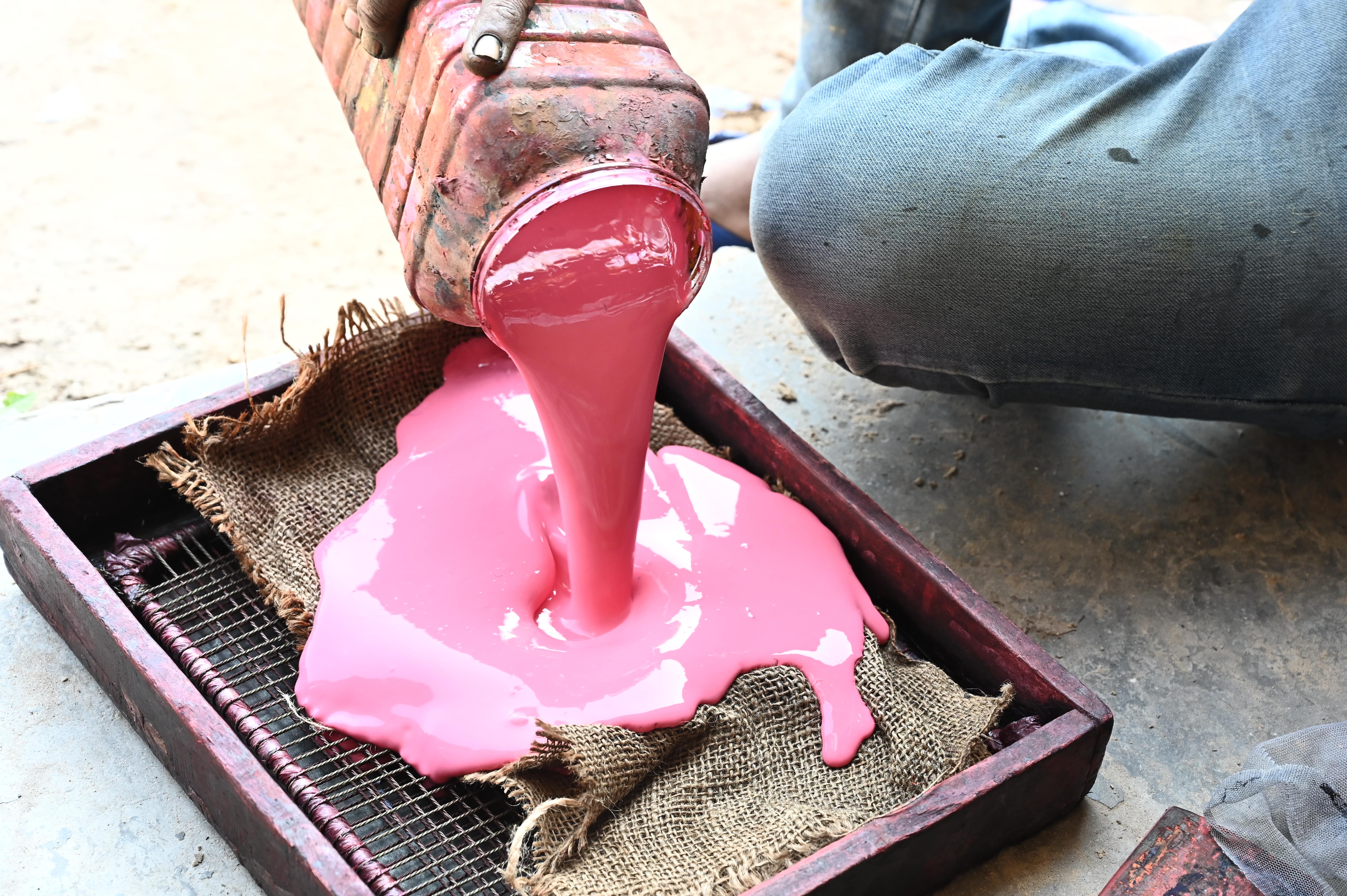In the backstreets of Bagru, a village in Jaipur, tradition still means a lot. Despite the encroachment of urbanization, the ancient village remains home to a unique community of hand block printers, whose craft has been passed down the generations for at least 300 years.
Day after day, fabric is printed in laborious designs, using intricately hand carved stamps dipped in a mix of colourful dyes. The select few printers, known as chippas, were taught this trade by their parents, who in turn, were taught this craft by theirs.
The Magical Process of Block Printing
Designs are first traced onto blocks of teak wood, a sustainable hardwood tree native to India. The block is then oiled and sanded before being intricately carved down with a metal cutter, leaving the desired design as a stamp ready for printing. The fabric, dyed in its base colour, is then rolled out flat on a table and pinned securely to reduce the risk of smudges or uneven printing.
Next, the wooden stamp is dipped in dye and with some force, is hand printed onto the fabric. The amount of pressure varies with each stamp and also from artisan to artisan, so dye take-up may be more on one dress to another. This is repeated to achieve the desired design, so precision and steady hands are important for success of the technique.
If the design has multiple colours, they will be printed separately using washed or differing blocks. Fabrics are washed and dried before being sewn and stitched into different styles. As this is such a manual process, variations and small dye splatters are inevitable, but we believe it’s what gives block printed garments their unique, and truly original charm.
Below, we’ve shared a step by step guide on how to bring the magic of block printing into your home. If you don't have a rubber or wooden block print at hand, you can make your own using a more readily available household product: the potato! Simply cut your potato in half, draw your desired design on with a pencil, and cut around it with a sharp knife/carving tool so that your design stands in relief approximately 1/2cm.
Block Printing at Home: A Step by Step Guide
You will need:
- Block print(s)
- Pure blend fabrics for printing
- Rough fabric or paper for waste
- Acrylic or fabric colours
- Sponge
- Ruler
Method:
1. Prewash your selected fabric to ensure any coatings are removed. Once dry, give it an iron to make sure the surface you’ll be printing on is smooth.
2. Pour your selected colour on a plate. Dab the sponge in the colour, then on the block. This will give an even application, helping you print with a crisp edge.
3. Test the stamp on a rough piece of fabric or paper before getting started. If the colour is showing unevenly, reapply colour using the sponge and try again.
4. When happy with your stamping technique, lay the rough fabric or paper on the table and place your pre washed/ironed fabric for printing above.
5. Stamp the block using even pressure, and hold the fabric down when removing to reduce the risk of smudging. Place a ruler on the fabric to keep the design coherent.
Essential Tips & Tricks:
Pure blend fabrics such as cotton, silk, mul, linen and muslin work best as the colours are less likely to spread once printed.
If printing on paper, acrylic or poster colours are best used.
When using multiple block prints, it’s best to print the fabric with one block at a time. When happy with the first dried design, you may then go in with the second block print
Iron the dried, printed fabric on the reverse side to help seal in the design.
Keeping The Traditional Craft Alive
Our block printing is undertaken by small and ethical, family workshops in the traditional block printing village of Bagru, Rajasthan. It's a highly skilled craft, but is unfortunately dying out due to the mass production of clothing and growing ease of screen printing. We are working hard to keep this craft alive and showcase the true skills of our wonderful artisans.
Shop the article
Read more
INSPIRATION
How To Create The Magic of Indian Block Printing At Home
In the backstreets of Bagru, a village in Jaipur, tradition still means a...
INSPIRATION
The Alchemy Of Colour
Behind the Painting
INSPIRATION
Making Better Food Decisions With Xanthe Gladstone
Xanthe Gladstone is a chef and food sustainability advocate. Her mission is...
INSPIRATION
KOMODO X Jodie Burrage
Komodo have been dedicated to creating clothes without leaving a negative...
INSPIRATION
Amy Russell Taylor x Sea Shepherd: Protecting Our Oceans
British jewellery designer and member of our Wolf & Badger community,...



